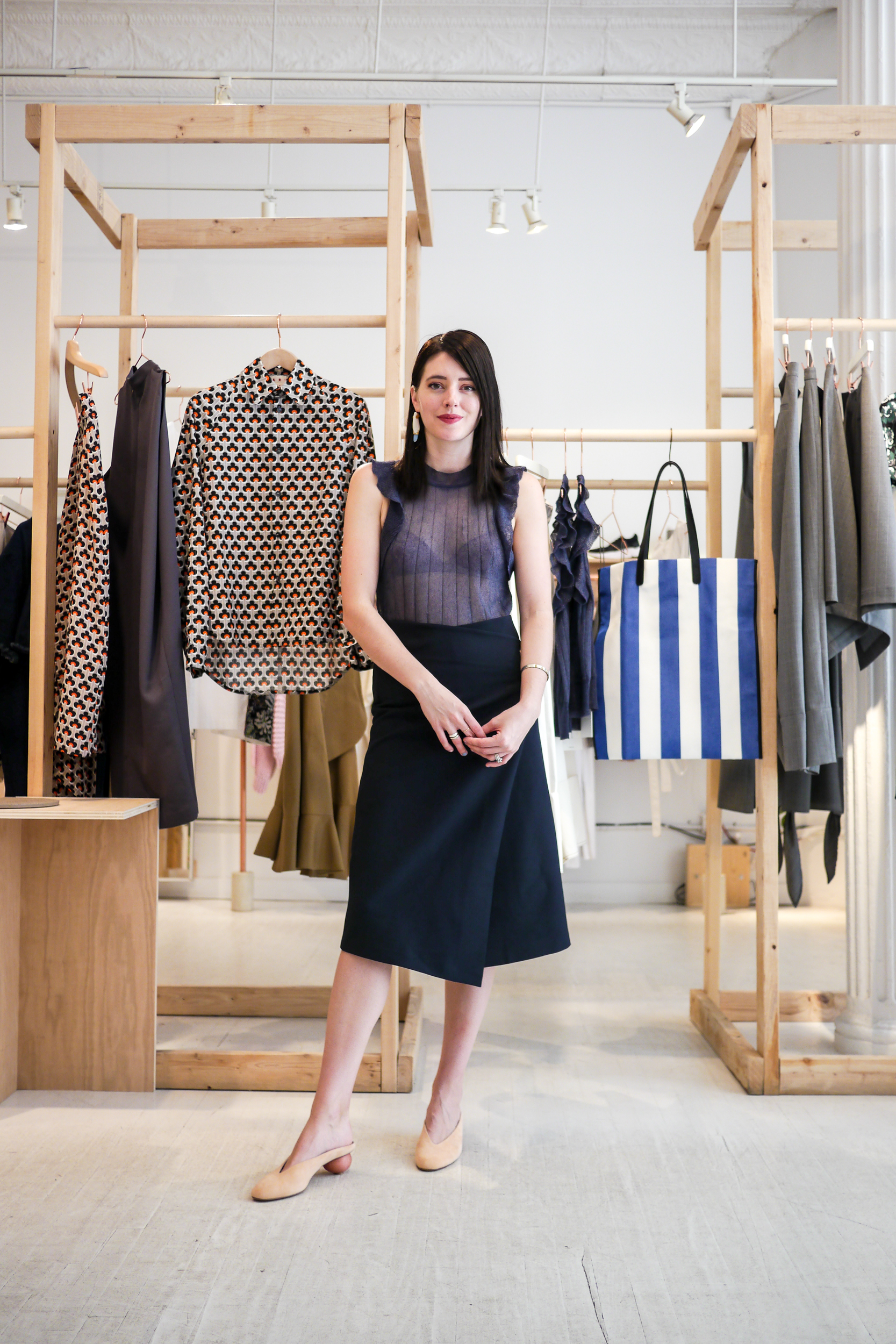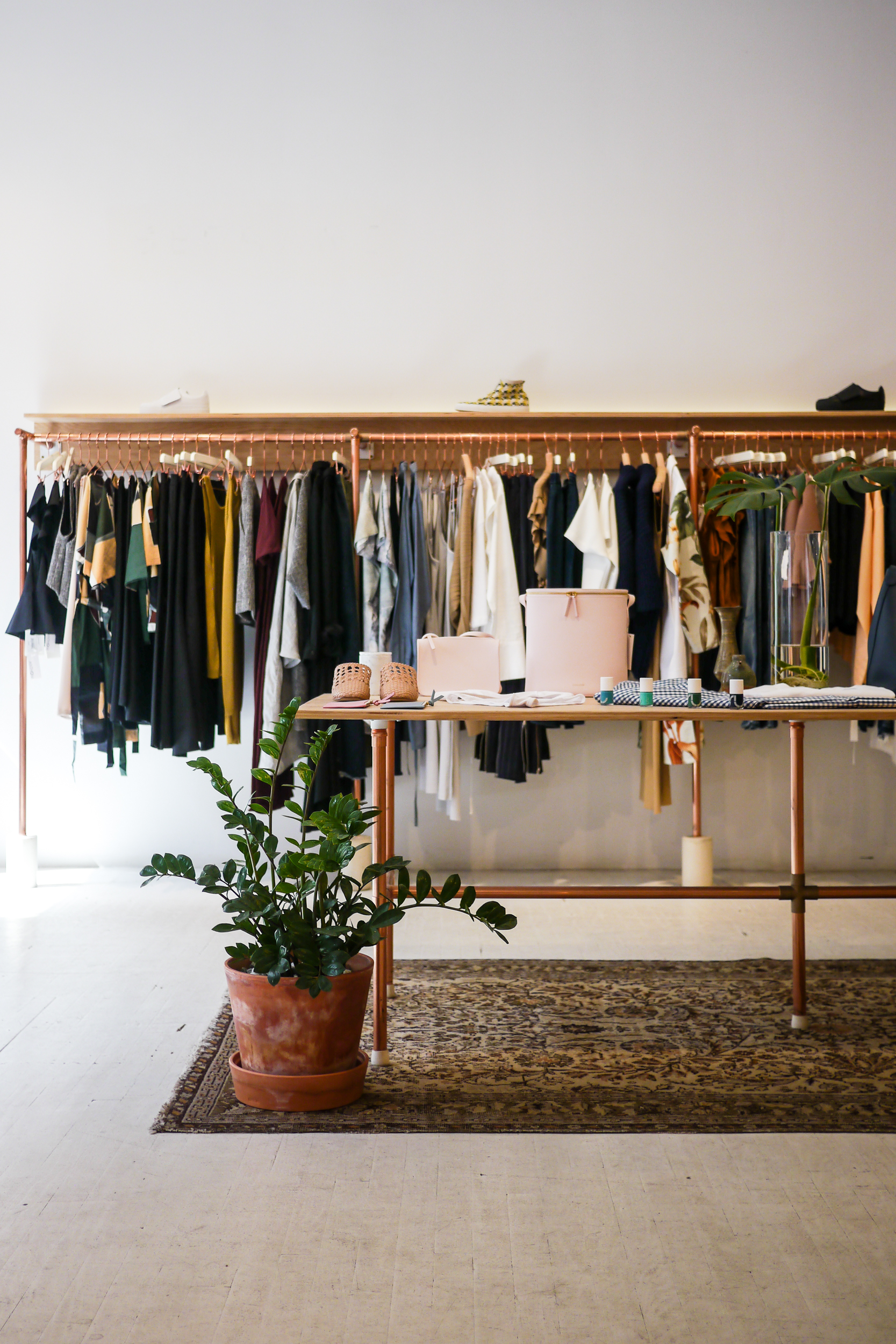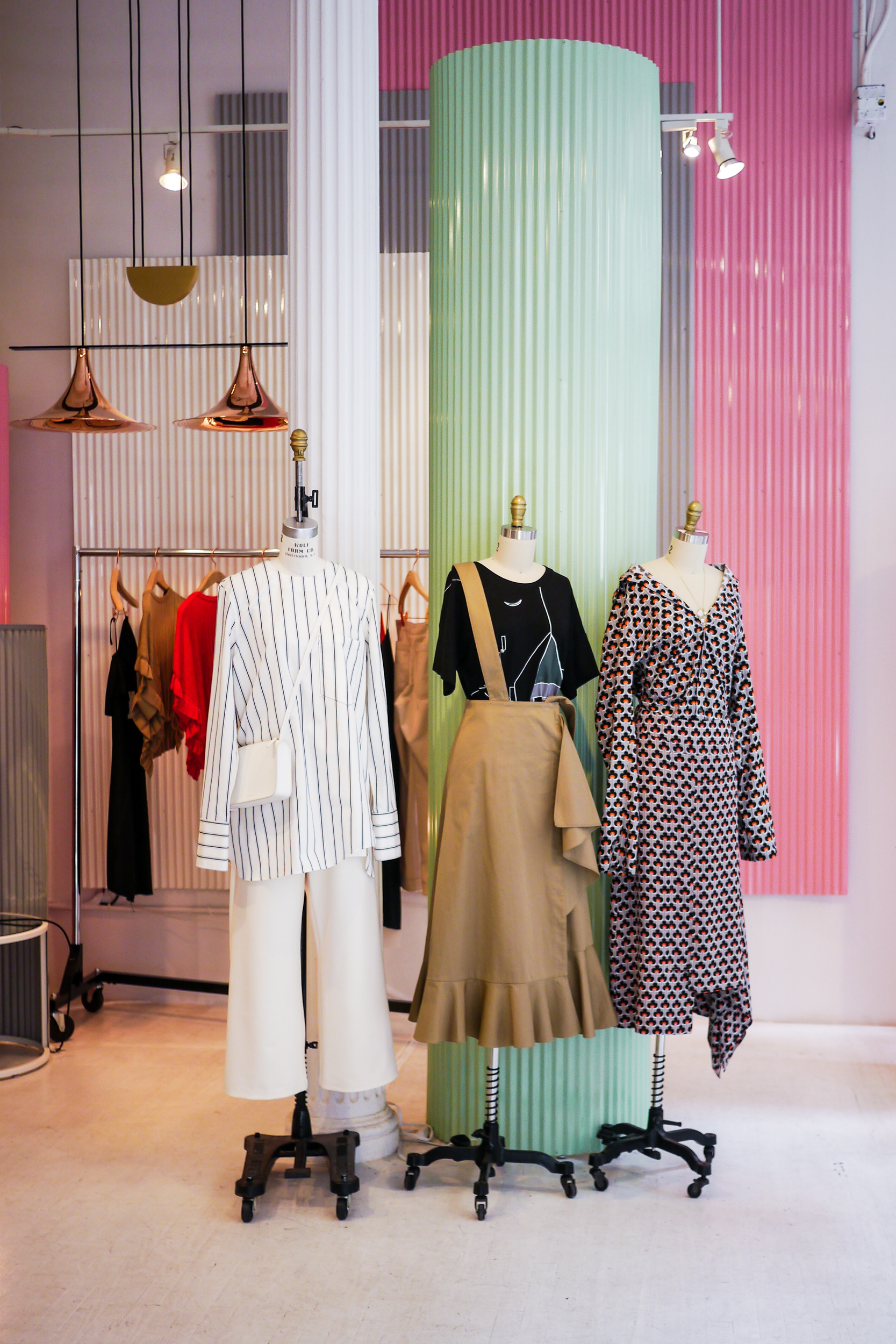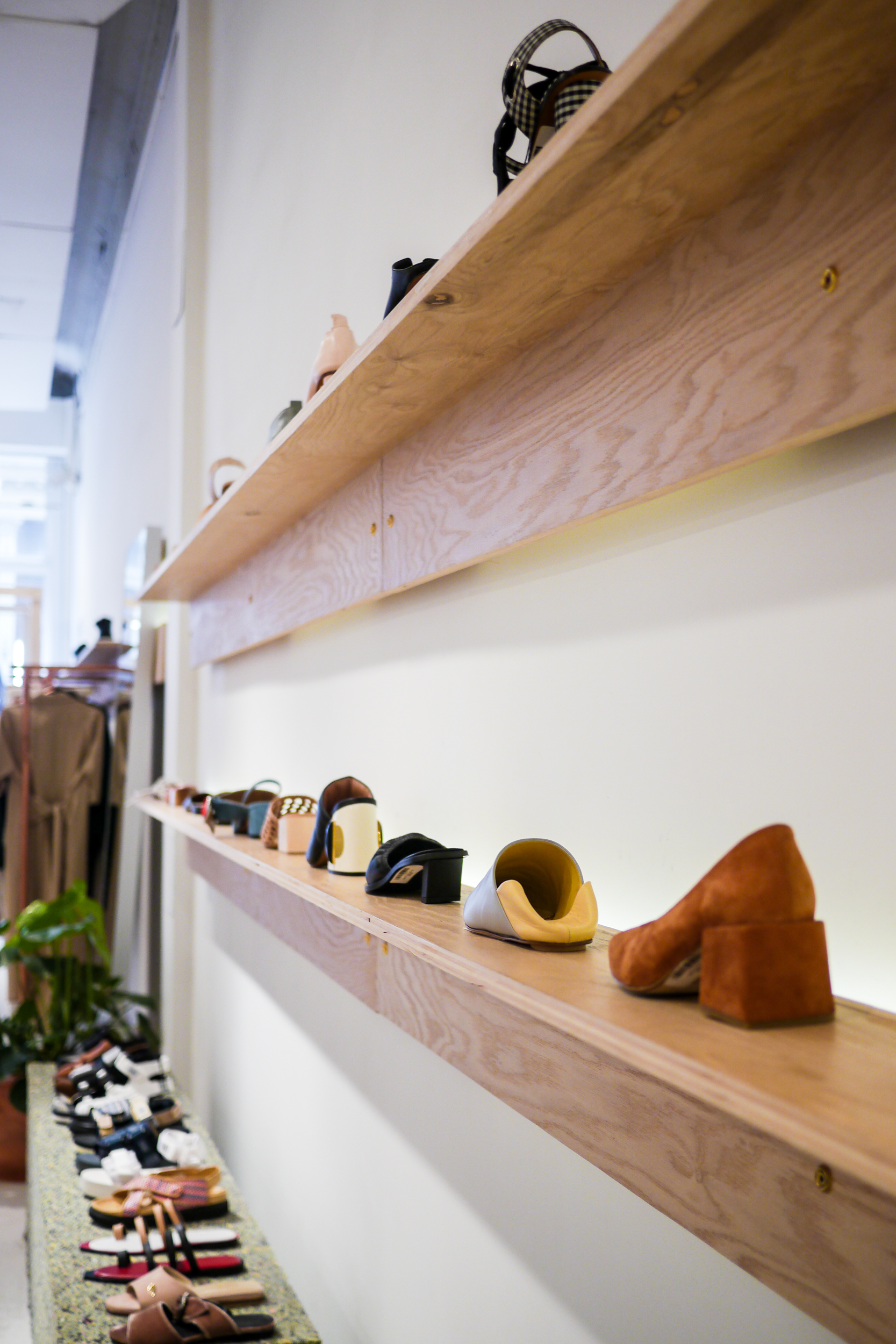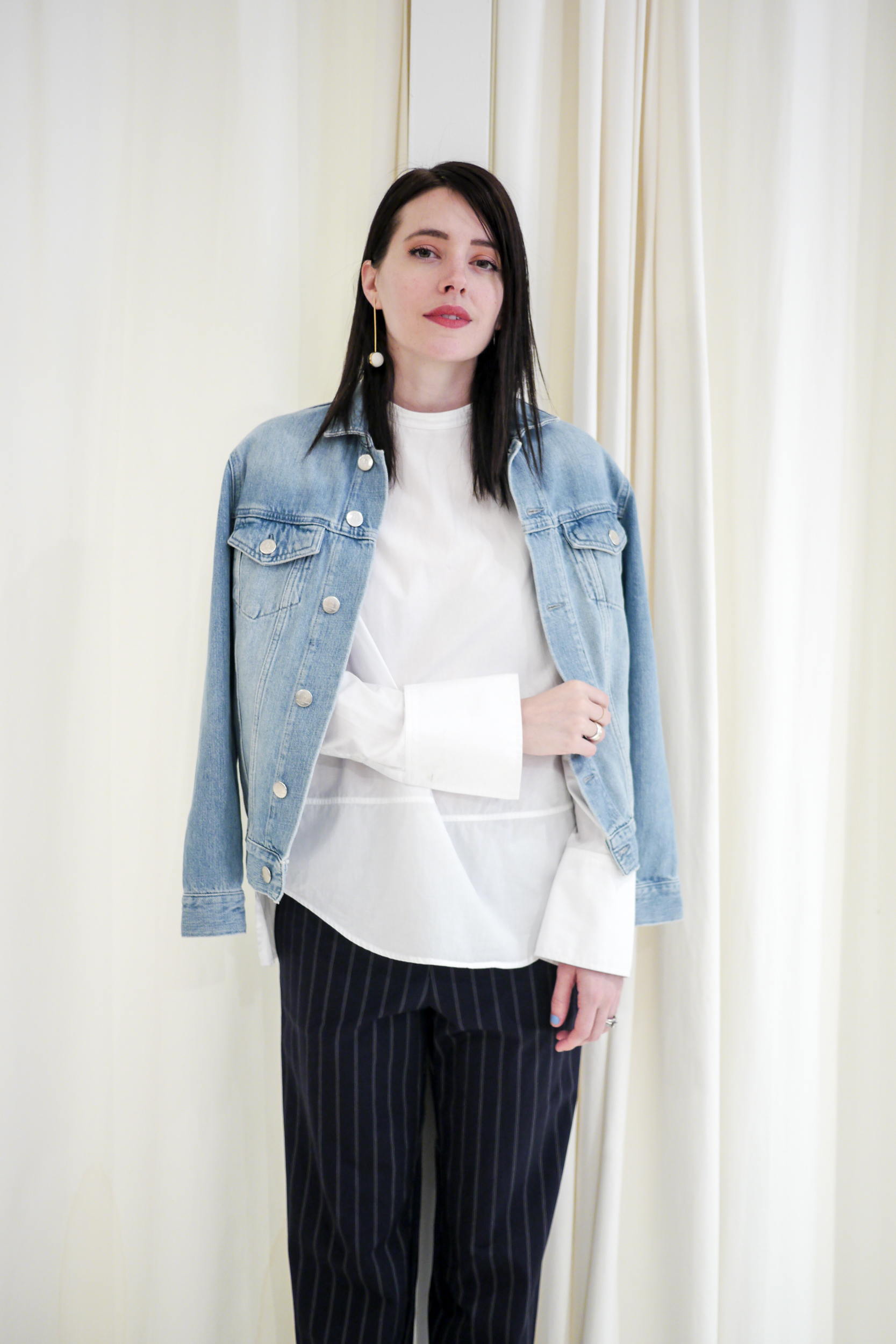Ashley Turchin of ANTHOM
“Shopping is no longer just about the clothes you buy, but the experience of finding them, beginning with the first time you like an item on Instagram.”
When Ashley Turchin launched ANTHOM in 2013, she already anticipated the shifting direction of retail, and she built a store that offered consumers more than just another place to mindlessly pick up new additions to their wardrobes. ANTHOM's SoHo space offers a fully curated experience, both in the selection of items from established designers alongside lesser-known (but equally beautiful) brands, and through the styling services they provide customers. Passersby like Éva Goichochea and Erin Allweiss come to the shop for unique pieces that can't be found anywhere else. We visited ANTHOM's gallery-like store on Mercer Street and spoke with Ashley about the ups-and-downs of launching a business in retail.
Can you tell me a little about your background—where you grew up, where you went to school?
ASHLEY: I am originally from Portland, Oregon. I was definitely the stereotypical Portland kid: liberal, hipster, went to shows a lot, lived my life downtown. And then I went to school in Lynchburg, Virginia, at Randolph-Macon Women’s College. I fell in love with the size and character of the school, and was searching for some sort of adventure. I didn’t know anyone, I didn’t know anything...I just flew across the country and delved into a culture unbeknown to me. I definitely feel more well-rounded because of that experience. My time in Lynchburg led me to understand more about why people believe certain things, and a lot of it has to do with presuppositions and the way you were raised.
What were you doing after you graduated?
I moved to DC, and I thought I was going to be a lawyer. I deferred my application for law school for a year to gain experience at a corporate litigation firm. So quickly one year turned into three and I was starting to feel stuck. I was 24 or 25, making really good money, but working nonstop. I felt like I was becoming a shell of myself, and by then I knew I didn’t want to go to law school anymore. I didn’t know what to do next. Luckily, because I had worked so hard, and had such a good relationship with everyone at the firm, they were very supportive of me when I told them that I wanted to leave and pursue something of my own interest, and they let me go part-time and kind of make my own hours. They basically created a position for me, and that’s unheard of. Now that I’m older, I realize that was probably my lucky break.
How did you figure out what you actually wanted to be doing?
I always knew I loved fashion and styling, and I always knew I wanted a store, but I didn’t really know what that meant. I didn’t go to fashion school, I didn’t know how to sketch or sew an item, I didn’t know how to do any of that. My friend had a store on Etsy, which inspired me to start something attainable for myself. Vintage is a marketplace for vendors to sell handmade or vintage items...and we know I couldn’t sew so...vintage it was. While vintage wasn’t necessarily my thing, I took this as an opportunity to start my own store. It was called La Belle Vie. I sourced vintage items and styled them in a new way. I didn’t make a lot of money, but I made a few sales a day, and more than that it gave me the confidence that I have an eye, and that I can do something like this. A couple of years later, knowing that my true love is for contemporary designers, I sat down with a friend and told her about my idea for ANTHOM, and asked if her boyfriend would be interested in building my website. Meeting with him, we realized that were in the same place in our lives, ready to jump into something new, so Marshall became my partner at inception. We started the idea in November 2012 and we launched our website in April 2013.
So what was the process like in between those two dates, going from just an idea to launching an e-commerce site?
Marshall is a jack of all trades. He’s confident and self-taught with everything from coding a website to building fixtures for the store. He had experience with websites and photography so we kind of just jumped right in. We did some research and knew that we wanted to build a site that prepared us for growth, so we ended up going with Magento. It took from November to April, we worked around the clock, and while he was doing that, Carla, his girlfriend, and I went on our first buying trip. As a new store, our budget was really limited, and we didn’t have our website launched, so we had to go to this trade show—basically with an image of our splash page—and sell these designers on our idea and the promise that it was going to work, and make them want to be a part of it. We had a handful of designers who committed to us for a season, but we also didn’t really know what ANTHOM was or where our place in the market was yet. The store is a breathing entity, and it’s been directing us, and we’ve been evolving. We started selling product that was under $150, and I think you have to start that way, when no one knows your name, and no one knows the brands you carry, there’s no reason for them to come to your website. Getting traffic to the website is really hard when no one knows who you are.
Do you have any tips on how to generate that traffic based on what you learned?
Most people pay for it, but we didn’t have any money. Social media helps, but we were doing this right when Instagram launched, and it wasn’t really the thing that it is now. But Instagram, Pinterest, things like that where you’re seeding links online and people are following them. The problem was the time it takes to build the following, and with very little initial investment we were running out of money and we needed to sell through our inventory. By August 2013, we decided to start doing pop-ups, which sold a good amount of our initial inventory and brought in cash so we could buy another season.
“Retail is really hard. Keep it small, keep it tight. Focus on what you’re doing. I always say, “I just gotta keep my head down.” I think it’s really important that you know who you are, what kind of store you want, and you just focus solely on that. Don’t try to be something else. And when the going gets tough, keep going.”
How did the first ANTHOM store come about, and how did you end up here in soho?
Doing the pop-ups led to a developer recognizing us, and asking us to be a part of their development just outside of DC, which is where we opened our first store. One month after opening, we got a phone call about a space in New York, and so after spending three months building out the first store, I was moving here to start on our second location. We made more money on our first day open in our Chelsea store than we had ever made in a day, so it was clear that this was what we needed to be doing. After about a year, we closed the DC shop and moved it to the Lower East Side. Then, as fate has it in New York City, our landlord in Chelsea was demolishing the building. Our LES location was more of a destination shop, and not quite enough to sustain the business. At this point we had nothing to lose...go big or go home. We decided that we wanted to be in SoHo, so we put all our money in this location and rolled the dice
That sounds exhausting. What are some of the other challenges you've faced in building a business from scratch?
You really have to take time to reflect and think about where you’ve been and how far you’ve come. I remember this moment, carrying this box into the SoHo space—a box that I had carried from DC, to Chelsea, to the Lower East Side, and now to SoHo—and I remember saying to Marshall, “If I have to carry this box one more time, I’m burning the whole thing down.” To have four locations in two years, it’s exhausting; you have to negotiate leases, you have to break leases, you have to spend a lot of money, you have to move, you have to re-build. I felt like ANTHOM wasn’t getting a chance at getting a sustained lease where we could really grow. And in New York, it’s really hard to do that because neighborhoods are developing so quickly that landlords don’t want to give out long-term leases. Another challenge has just been the growing pains. More employees, bigger buys, new websites...every little bit of profit goes back in the business. We recently acquired the business of our best-selling designer, Yune Ho, and made him a partner in our company. We help him with all of this business logistics and sales. His line is unbelievable and we’re really proud to be working together. You can find Yune Ho at stores like Barneys, Kick Pleat, Mohawk General, Tom Greyhound Paris and more.
What have you learned about finding balance when it comes to running a business but also taking care of yourself?
Balance was my motto this year. I was burning out and realized if I want to keep going I need to figure out how to balance work, family and life. In the future, I want children, and I want to be able to "have it all," as they say. I want to be a good person, a good wife, and a good leader in our company. I think taking care of yourself and focusing on yourself so that you can be the best version of yourself is really important. And I'm working on it—I still struggle with the balance thing, but I'm getting there.
What do you look for in the brands and pieces that you carry in the store? Are there any “must-haves” that you have in mind when you’re shopping for inventory?
ANTHOM has filled a niche in the market in that we are multi-line and we carry exclusive product, but we're about mixing pieces from both luxury and contemporary price points. I think that’s really important, because our customer shops that way. We look for high quality, special pieces that a woman can live in—they’re practical, they’re comfortable, but she can subtly stand out in them. I always say, when you see an ANTHOM woman walking down the street you’re like, “Who is she? What is she wearing?” She’s confident, and it’s not the clothes telling the story, it’s her, and it’s about how she wears them.
How have you found the brands that ANTHOM carries? I know you mentioned going to trade shows earlier, is that your main source?
With social media, we have been able to go down the rabbit hole and find designers that no one else has, and I think that’s really what makes ANTHOM special, and makes us stand out. A lot of multi-line stores all shop the same trade shows, so even though the buy is different, they have similar product. And we do too, because our customer wants that product, but it’s a fine balance between having the brands people know and then also educating and introducing new brands to our customer.
So it’s kind of about attracting new customers into the store by offering the things that they already know they like, but then saying, while you’re here you’re going to find new stuff that you also like but haven’t seen before.
That’s exactly right. Or our customers who shop with us regularly know that they can always find something special and different here.
Your retail space is really beautifully curated—everything in the store feels just as much like decoration as it is inventory for sale. Why did you want the retail experience of ANTHOM to be like that?
I think retail is changing, people are not shopping the way they used to. I feel like you have to create a story and a lifestyle, and that's something that's important to our customer. She leads a very curated life: she likes food, she likes art, she likes to go to museums—she’s thoughtful and aware. And being in a space like this, where it’s beautiful, but not cold—it’s still inviting—it just makes sense for us. I don’t even know how to do it a different way. It was funny when our landlord came in, because he was so confused about why we weren't filling the space with racks and racks of product. It's a different approach from what people are used to. I want to provide an experience, and I want women to see how we want to do it, you know?
What’s next for ANTHOM? Do you have any goals, either short-term or long-term, that you’re currently working towards?
So many goals. We recently took our website down, and we’re relaunching in the fall. ANTHOM is really coming full-circle: we launched online with no brick and mortar, and now we have our flagship retail store and we’re ready for e-comm. People know us, they know the brands we’re carrying, they’re ready for it. I’m really excited about the website, it's going to be refreshing—it’ll definitely have our quirky fingerprint on it. We’re also working on some exclusive designs for the store, which is very exciting. As well as launching Yune’s ecom and expanding into four seasons.
When a woman comes into anthom, what do you hope she leaves with—what kind of experience do you want her to take away from shopping here?
I want her to walk off the streets of New York City, and walk into this tranquil space, and have that moment of, “What is this? How do I not know about this?” And I want her to subconsciously experience this beautiful, calm, confident environment. I want her to make friends with us, and I want her to leave with an outfit that makes her feel like a million bucks. And so many times this happens: they’ll leave with a piece or two, and a few weeks later come back and say “I wear that item all the time. I get so many compliments, please, I need more!” It’s funny because we’re not a selling environment in that traditional retail sense. What we really want is to help women move away from fast-fashion, and move into really cherishing and loving what they own and who they are.
You can visit ANTHOM at 25 Mercer Street in SoHo. Follow @shopanthom on Instagram to see what beautiful pieces are currently available in the shop.
Words by Kate Palisay



